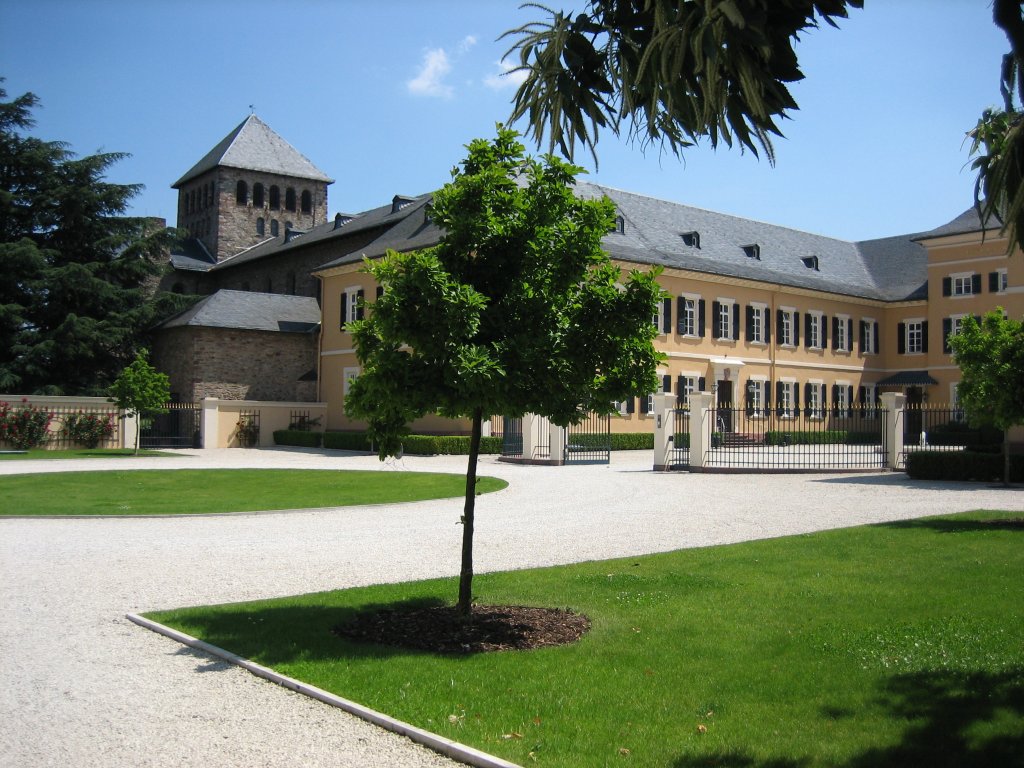« OK, so which Harry Potter character are you? | Main | Pilgrimage »
June 16, 2007
Traces of the Benedictines
The Rheingau area is famous for its vineyards streching up the hills on both sides of the river Rhine. The view from some of these hills is quite spectacular.
View of the Rhine valley from the top of Johannisberg (Mountain of St John).
The first vines were brought to this area by the Romans and obviously developed very well. For almost 2000 years now this area has been farmed and cultivated by its inhabitants. Much of this is undoubtedly due to the monasteries that were founded here. Johannisberg was the first monastry in the Rheingau and the only Benedictine one. There's a Benedictine nunnery, though, a bit further down the river which was founded by the famous Hildegard von Bingen.
In 1130 the church of the monastry was consecrated. Its patron is St John the Baptist. The monastry prospered until the Peasant Wars in the 16th century. After the wars the last abbot was removed from its post by the Archbishop and the monastry dissolved. Its church became the parish church.In 1716 the monastry was bought by the prince abbot of Fulda. The monastry was torn down and a castle build instead which served as a summer residence.

Schloss Johannisberg and the church, the only part of the monastry that has survived until today
Along with the building of the castle went a redecoration of the church. Originally being build in the style of a Roman basilica the outside was left untouched but the interior was redone in the baroque style between 1717 and 1726. I am not sure I would have liked it. You don't expect Baroque when you enter a Roman building.

Present interior of the church
In 1942 church and castle were heavily damaged during an air raid. Everything combustible in the church burnt but the outer walls could be salvaged. Reconstruction work started in 1945. The architect in charge wanted to preserve the orignal character of the building while at the same time giving the interior a more modern appearance. He also wanted to bring more light into the church, hence the white washed walls and pillars. It is a pity that the original coloured floor tiles from medieval times were lost over the years. Today's stone floor is no substitute! But otherwise the interior fits a Roman basilica very well.In my opinion.
Posted by Mausi at June 16, 2007 06:34 AM
Trackback Pings
TrackBack URL for this entry:
http://mt3.mu.nu/mt/mt-tb.cgi/5057